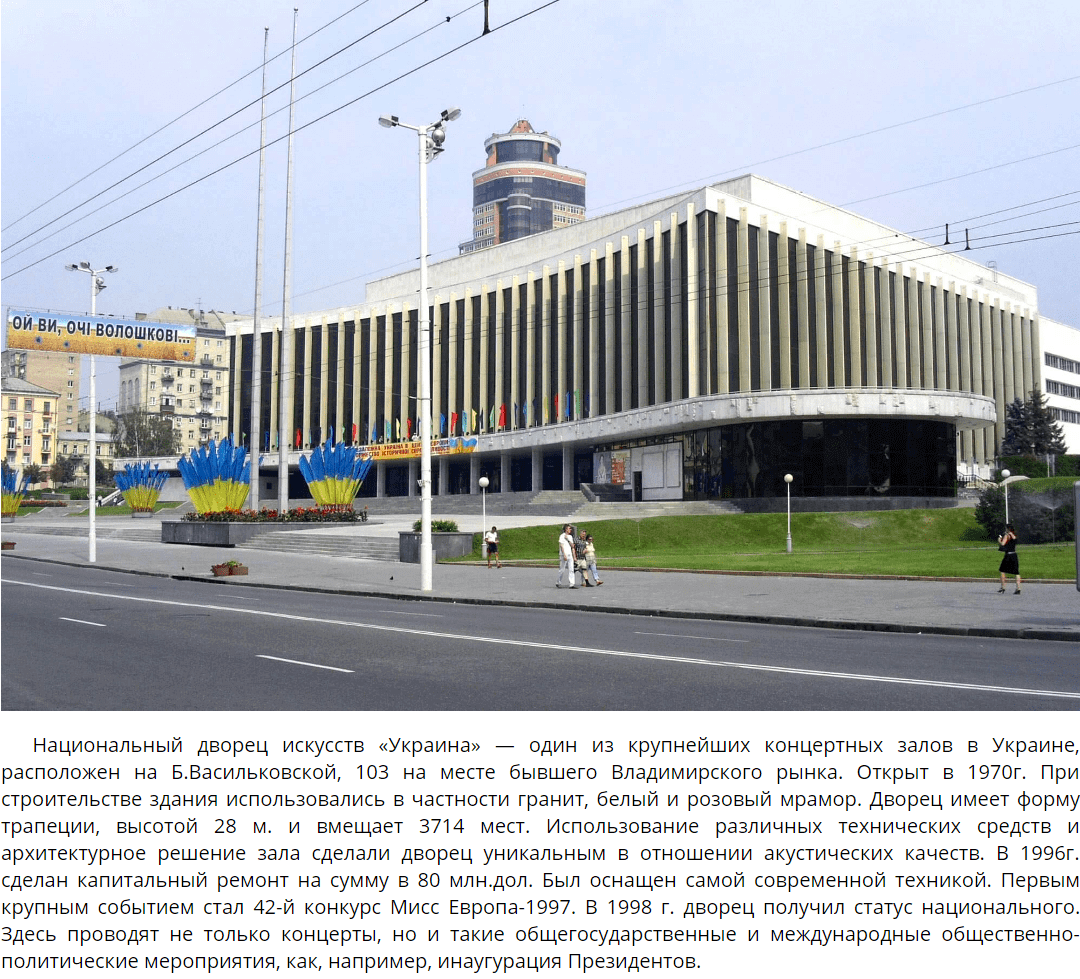Excursion to Kiev Pechersk Lavra

We conduct individual tours around the oldest shrine – the Kyiv Pechersk Lavra. Today it is a reserve of national importance, which is visited annually by thousands of tourists from around the world. During our excursion you will learn the history of the foundation of the Pechersky Monastery, see the decoration of the Assumption Cathedral and the Refectory; climb the Lavra bell tower which opens a picturesque panorama. We also suggest visiting the Near and Far Caves, where the relics of the saints are stored. To your choice, we offer excursions to the Museum of Historical Treasures or to the Microminiatures Exhibition. Duration of the tour – 2-3 hours.
MAP OF THE KYIV PECHERSK LAVRA
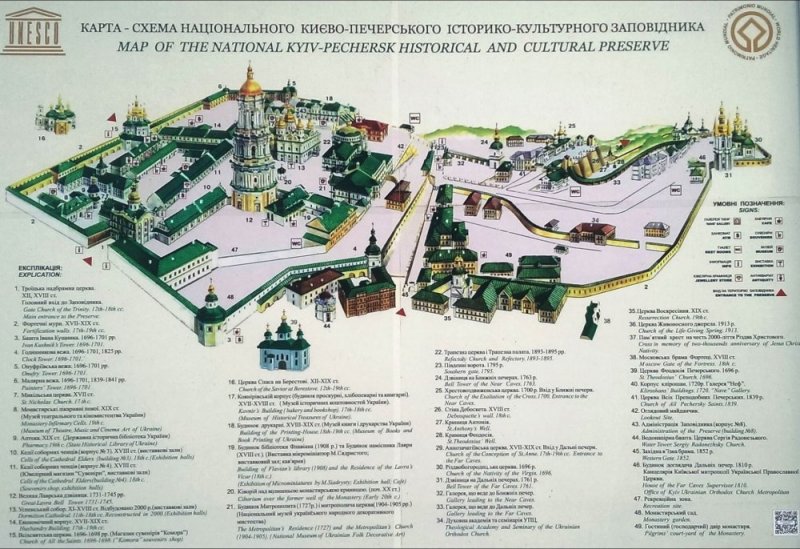
MUSEUMS ON THE TERRITORY OF THE KIEV PECHERSK LAVRA
- The Museum of Historical Treasures
- The Museum of the Book and Printing
- Museum of Theater and Cinema
- Museum of Folk Decorative Art
- The Museum of Microminiatures
- Museum of the Lavra History
About Lavra museums you can read here
In the entire history of the past years, our ancestors left behind many architectural masterpieces that have been admired by more than one generation. And the main value in the list of the cultural heritage of Ukraine is the Pechersk Lavra – a majestic and unique in its kind sacred relic of the era of Kievan Rus, which has syrvived till today.
Kyiv-Pechersk Lavra was founded in 1051 by the monk Anthony, who came from Athos. Having settled in caves, Anthony established the first prayer communities. Such an event very soon attracted the attention of citizens. Prince Izyaslav, son of Yaroslav the Wise got interested too. Izyaslav transferred the land near the caves to the community and also donated funds for the construction of the church and cells. In 1062 the church was named Pechersk.
The monastery was actively replenished with the brethren, and the first above-ground temple of the Dormition of the Mother of God appeared. In an effort to retire and pass the reins of power, Anthony moved to live on another slope, where he settled in a cave cell. Soon other monks began to settle near him. Thus the Near and Far Caves arose.
Having become famous not only in Kievan Rus, but also beyond its borders, the Pechersky Monastery becomes a spiritual, cultural and educational center. One of the significant events was the stay of Nestor the Chronicler, who wrote “The Tale of Bygone Years”, which is considered to be the primary source of the current information about Kievan Rus.
The second wave of prosperity of the Pechersk monastery falls on the turn of the XVI – XVII centuries. Thus, in 1615, the first printing house in Kyiv was opened, typography appeared, and the first church-liturgical book, named the “Hierarch” was published. It is noted that the publishing house of the Pechersk Printing House was distinguished by the highest printing technology.
Today, the building of the printing yard is the Museum of Books and Printing, which has up to 60 thousand exhibits. Here you will see the old printing presses, paper and fonts, learn the history of the book craft. In the courtyard there is a workshop-foundry.
One of the eminent superiors was Archimandrite Petro Mohyla. He opened the first school on the territory, paid special attention to education and tried to bring the Pechersk printing house to the main positions in public life. The book “Requiem” was not only the apogee of his works, but also became widespread in the Orthodox world. Petro Mohyla was buried near the main entrance of the Assumption Cathedral.
In 1688, the title of the monastery was assigned to the Pechersk monastery. At the beginning of the XVIII century, in order to strengthen the city, the Pechersk citadel was founded on the basis of the monastery buildings, which became part of the fortress fortifications. Kyiv Fortress is a historical and architectural monument of military engineering art and is considered one of the largest stone and earth fortresses in the world. A museum complex was created on the basis of the Hospital fortification, where remains of ramparts with a defensive wall and caponiers are preserved. In addition, the Prison Museum is operating in the Diagon Caponier.
Ivan Mazepa made an important contribution to the defense capacity of the Pechersky Monastery and to the construction of new buildings of the Citadel. Thanks to his funding, stone walls and towers were built, as well as churches were restored: the Assumption Cathedral and the Trinity Gate. The Church of All Saints was built too. The coat of arms of hetman was installed Mazepa on its facade.
By the middle of the XVIII century the architectural composition of the Lavra was fully formed. Its area reached up to 30 hectares, and the bell tower with a height of 96.5 m became the highest structure in Kyiv. A hospital, overnight stay for pilgrims and a two-year public school for children of employees and citizens were opened there. The monastery was revered by many famous personalities, including nobles and persons of the royal dynasty, who made generous gifts and donations for its maintenance.
The necropolis of Lavra that has been formed over the centuries should also be mentioned. During the entire existence of the monastery, the abbots of the church, the princes of Kyiv and Lithuania, and outstanding military leaders, especially those of noble family were buried here. Among the famous names buried here are Kochubey, Vishnevetsky, Stolypin. The cemetery is considered to be the oldest necropolis in Kyiv.
With the advent of Soviet power, the monastery was nationalized. Kyiv-Pechersk Lavra was approved as a historical reserve and transferred into a museum platform. Colossal damage was caused during the Second World War – the Assumption Cathedral was blown up. The only surviving ground building is the Trinity Church (1106-1108). The artistic painting of the facade of the Trinity Church is recognized as a valuable monument of national visual art of the 18th century.
In 1988, the object was returned to the church community. Since 1990, the Kyiv-Pechersk Lavra is included in the UNESCO World Heritage List. Later the seminary, the printing house were renewed, and the Assumption Cathedral was reconstructed. Now the publishing department, sound and video studios, icon-painting, sewing and candle workshops, guest houses and refectory for pilgrims are operating here. Festivals, concerts, exhibitions, fairs are constantly held for parishioners.
The Pechersk Lavra, as before, is the most visited place. The lower part is a functioning monastery. In the caves there are six ancient temples and relics of more than 120 saints are kept, including those of Ilya Muromets and Nestor the Chronicler. The length of underground labyrinths is over 300 m, the depth is up to 15-20 m. Every day hundreds of believers come to worship the holy relics. Nearby there are wells with healing water. Near and far caves are not only sacred places, but unique monuments of antiquity, attracting the attention of foreign tourists.
The upper part is a historical and cultural reserve, which is one of the largest museum complexes in Europe. The reserve includes 144 objects of architecture, the Museum of the History of the Lavra, the Museum of Treasures, the Museum of Decorative Arts, the Exhibition of Microminiatures, as well as the Museum of Theater Music and Cinema.
If you wish, you can visit the Belfry and climb the observation deck at an altitude of 32.6 m by overcoming 374 steps. From the height of bird’s eye, a beautiful view of the surroundings, the Dnieper, and the Left Bank will open.

















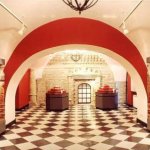
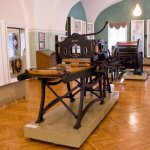
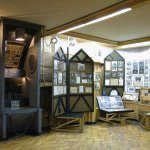
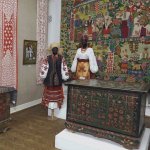


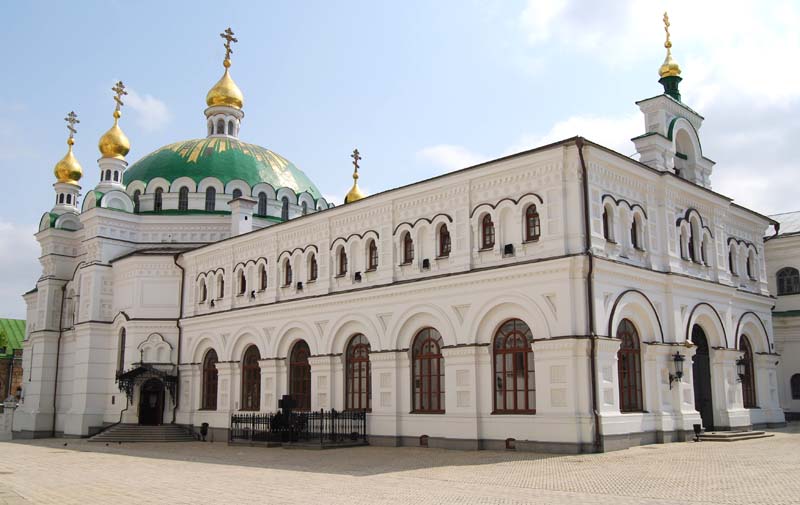 The Refectory was erected in 1895 in the Byzantine style. The building consists of a refectory chamber and a church adjacent to it. During the explosion of the Dormition Cathedral (1941), the refectory was severely destroyed. The restoration of the facades was completed in 1956, while the interior was finalized in 1980. The Refectory ‘s design is famous for unique icons created for the iconostasis and cathedral icon cases (artist G. Popov), most of which are considered to be lost. Although some of the iconic works can be still seen. The walls of the church preserved the burials of Vasily Kochubey and Ivan Iskra next to the grave of Peter Stolypin, buried here in 1911.
The Refectory was erected in 1895 in the Byzantine style. The building consists of a refectory chamber and a church adjacent to it. During the explosion of the Dormition Cathedral (1941), the refectory was severely destroyed. The restoration of the facades was completed in 1956, while the interior was finalized in 1980. The Refectory ‘s design is famous for unique icons created for the iconostasis and cathedral icon cases (artist G. Popov), most of which are considered to be lost. Although some of the iconic works can be still seen. The walls of the church preserved the burials of Vasily Kochubey and Ivan Iskra next to the grave of Peter Stolypin, buried here in 1911.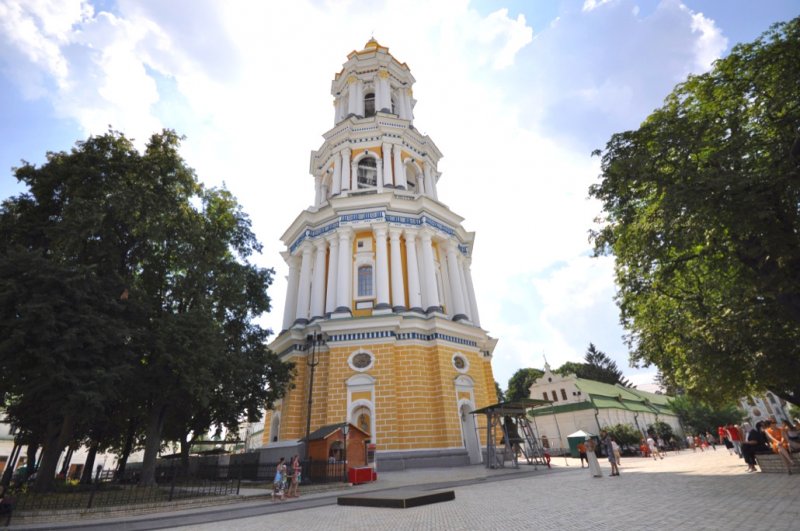 The Bell Tower of the Kyiv-Pechersk Lavra was erected in 1731-1745. It is an octagonal four-tier baroque tower with a gilded dome and reaches 96.5 m in height. It is worth noting that the design itself is inclined at 62 cm in the northeast direction. The clock on the fourth tier of the Lavra bell-tower has reached present day since 1903. In 2015, after the restoration works, the bell tower was opened for a visit. Now everyone can go up to the third tier, thus having overcome 374 steps. From the viewing platform, located at an altitude of 32.6 m, a panoramic view of the entire territory of the Kyiv-Pechersk Lavra, the Dnipro, the Right and Left Bank.
The Bell Tower of the Kyiv-Pechersk Lavra was erected in 1731-1745. It is an octagonal four-tier baroque tower with a gilded dome and reaches 96.5 m in height. It is worth noting that the design itself is inclined at 62 cm in the northeast direction. The clock on the fourth tier of the Lavra bell-tower has reached present day since 1903. In 2015, after the restoration works, the bell tower was opened for a visit. Now everyone can go up to the third tier, thus having overcome 374 steps. From the viewing platform, located at an altitude of 32.6 m, a panoramic view of the entire territory of the Kyiv-Pechersk Lavra, the Dnipro, the Right and Left Bank.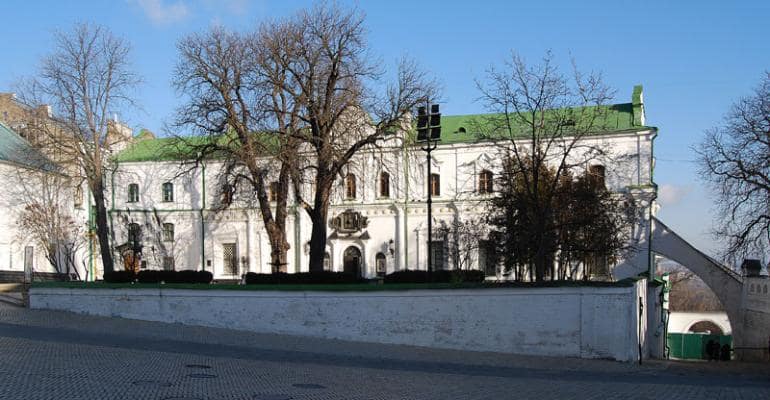 The Printing House was founded in 1615 by Elisha Pletenetsky, who laid the foundation for book printing in Kyiv. The first edition is The Book of Hours (1616), preserved to this day. In the XVII-XVIII centuries, the printing business played an important role in the development of education, and its publications were noted for their high printing quality. The architecture of the printing house in the Ukrainian Baroque style looks like a fabulous house with a ledge in the form of a tower. Its eastern side is decorated with a terrace. Today it houses the Museum of Book and Printing, opened in 1975. The museum reflects the history of book business from the times of Kyiv Rus. You will see antique printing presses, paper and fonts, as well as a foundry workshop.
The Printing House was founded in 1615 by Elisha Pletenetsky, who laid the foundation for book printing in Kyiv. The first edition is The Book of Hours (1616), preserved to this day. In the XVII-XVIII centuries, the printing business played an important role in the development of education, and its publications were noted for their high printing quality. The architecture of the printing house in the Ukrainian Baroque style looks like a fabulous house with a ledge in the form of a tower. Its eastern side is decorated with a terrace. Today it houses the Museum of Book and Printing, opened in 1975. The museum reflects the history of book business from the times of Kyiv Rus. You will see antique printing presses, paper and fonts, as well as a foundry workshop.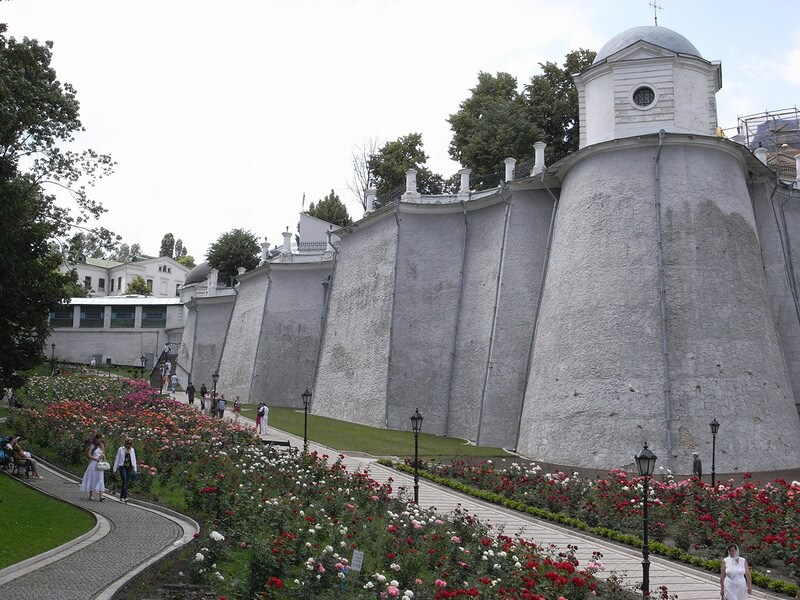 The Fortification walls were built in 1844-1848 with loopholes for shooting from rifles and embrasures for cannons, embrasures were closed with wooden flaps (Blyzkopecherska Str.). Repeating the terrain, the wall with two open semi-circular towers covers the territory of the Far and Near Caves, separating the lower part of the Pechersky Monastery from the urban development on the south and south-east side, from the western one – from the Hostynny Dvir, and from the north – connecting with the walls of the XVIII century. The length of the wall is 1039 m, the thickness is 3.5 bricks, the height is up to 4 m. There was no battleground on the wall, so wooden racks were built to place the shooters, if necessary. A fragment of the wall has preserved. In 1972 it was restored in its original form.
The Fortification walls were built in 1844-1848 with loopholes for shooting from rifles and embrasures for cannons, embrasures were closed with wooden flaps (Blyzkopecherska Str.). Repeating the terrain, the wall with two open semi-circular towers covers the territory of the Far and Near Caves, separating the lower part of the Pechersky Monastery from the urban development on the south and south-east side, from the western one – from the Hostynny Dvir, and from the north – connecting with the walls of the XVIII century. The length of the wall is 1039 m, the thickness is 3.5 bricks, the height is up to 4 m. There was no battleground on the wall, so wooden racks were built to place the shooters, if necessary. A fragment of the wall has preserved. In 1972 it was restored in its original form.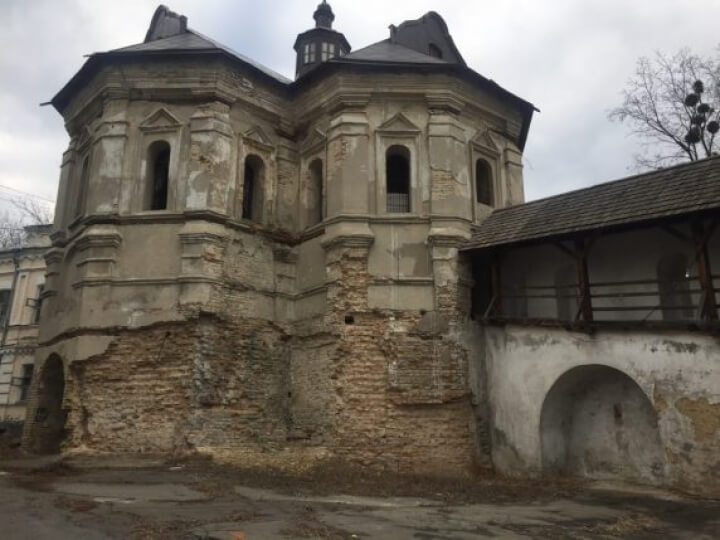 Mazepa walls with towers – walls of the Upper Lavra with five towers and several entrance gates, including those with gatehouses built in 1698-1701 at the expense of I. Mazepa. They served as a defensive part of the monastery and were part of the fortifications of the Kyiv fortress. The stone walls had a height of 7 m and ended with battle galleries. Two-tier towers with loopholes supported the line of walls.
Mazepa walls with towers – walls of the Upper Lavra with five towers and several entrance gates, including those with gatehouses built in 1698-1701 at the expense of I. Mazepa. They served as a defensive part of the monastery and were part of the fortifications of the Kyiv fortress. The stone walls had a height of 7 m and ended with battle galleries. Two-tier towers with loopholes supported the line of walls. The wells of the Monks Anthony and Theodosius are located in the lower part of the Lavra between the Near and Far Caves, named after the founders of the monastery. Water from the wells is considered to be holy and healing. In the 1950s, water was studied by researchers who found that there are mineral compounds with healing properties. In 2002, chapels were erected above the wells.
The wells of the Monks Anthony and Theodosius are located in the lower part of the Lavra between the Near and Far Caves, named after the founders of the monastery. Water from the wells is considered to be holy and healing. In the 1950s, water was studied by researchers who found that there are mineral compounds with healing properties. In 2002, chapels were erected above the wells. The Museum of Microminiatures – was created in 1977 by the world-famous Ukrainian master Mykola Syadrysty and is located in one of the buildings on the territory of the Kyiv-Pechersk Lavra. The peculiarity is that all products are created manually by the author’s own technology. Only in the Museum of Microminiatures you can see unique works that amaze with utterly small dimensions. For example, a caravan of golden camels in the eye of needle, score on a glass petal of chrysanthemum 2 × 5 mm, the shoddy flea, a chessboard with figures on the head of a pin and the world’s smallest book “Kobzar”(0.6 mm size). The book has 12 pages with T.Shevchenko poems and drawings and recorded in the Guinness Book of Records. The works of Mykola Syadrysty are also in the museum of Andorra.
The Museum of Microminiatures – was created in 1977 by the world-famous Ukrainian master Mykola Syadrysty and is located in one of the buildings on the territory of the Kyiv-Pechersk Lavra. The peculiarity is that all products are created manually by the author’s own technology. Only in the Museum of Microminiatures you can see unique works that amaze with utterly small dimensions. For example, a caravan of golden camels in the eye of needle, score on a glass petal of chrysanthemum 2 × 5 mm, the shoddy flea, a chessboard with figures on the head of a pin and the world’s smallest book “Kobzar”(0.6 mm size). The book has 12 pages with T.Shevchenko poems and drawings and recorded in the Guinness Book of Records. The works of Mykola Syadrysty are also in the museum of Andorra.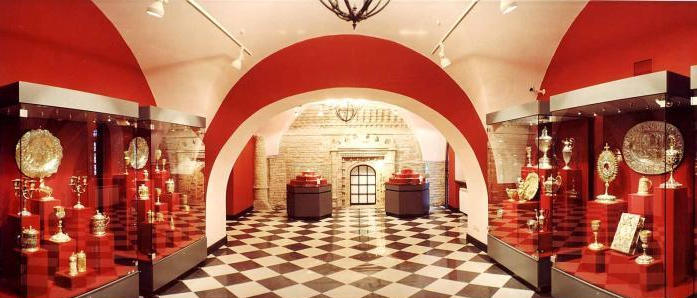 The Museum of Historical Treasures of Ukraine – was founded in 1969 and is located in one of the buildings on the territory of the Kyiv-Pechersk Lavra. The museum has one of the richest collections of gold products in the countries of Eastern Europe and is a kind of precious chronicle of Ukraine from the Bronze Age to the present days. The museum has up to 60 thousand items of archaeology and domestic art from precious stones and metals. Among the exhibits there are famous treasures of burial mounds ” The Haymanov’s Grave”, “The Thick Grave”, “Oguz” – Scythian burials dating from the 4th century BC. The masterpiece of the collection is the famous gold Scythian pectoral, which was found in the burial “The Thick Grave”.
The Museum of Historical Treasures of Ukraine – was founded in 1969 and is located in one of the buildings on the territory of the Kyiv-Pechersk Lavra. The museum has one of the richest collections of gold products in the countries of Eastern Europe and is a kind of precious chronicle of Ukraine from the Bronze Age to the present days. The museum has up to 60 thousand items of archaeology and domestic art from precious stones and metals. Among the exhibits there are famous treasures of burial mounds ” The Haymanov’s Grave”, “The Thick Grave”, “Oguz” – Scythian burials dating from the 4th century BC. The masterpiece of the collection is the famous gold Scythian pectoral, which was found in the burial “The Thick Grave”. Gate Church of the Trinity – built in 1106-1108 as a part of the fortifications of the monastery, founded in 1051 by monk Anthony, who created here the first prayer communities, settling in the caves of the future Pechersk monastery. It is from the caves that the monastery takes its name. Since the end of XI century the territory of the monastery began to build up. The Assumption Cathedral, the Trinity Gate Church and the Refectory were built. The Trinity Gate Church was founded by the grandson of Chernigiv and Kyiv Prince Svyatoslav Yaroslavovych. Being the heir to the throne, the founder of the church refused from the prince’s title and took monastic vows, taking the name of St. Nicholas. The Trinity Gate Church is the only surviving land structure of the Kyiv-Pechersk Lavra. Art painting of the eastern and western facade is recognized as a unique valuable monument of Ukrainian art of the early 18th century. In the middle of the XVIII century was formed a unique architectural ensemble of the Lavra, which preserved to this day. The Kyiv-Pechersk Lavra became the largest monastery of Kyivan Rus, the area of which was about 30 hectares. The territory of the monastery includes near and distant caves. It should be noted that the bell tower is 96.5 m high, which until the 20th century was the highest building in Kyiv. Since 1990 is listed as a UNESCO World Heritage List. On the territory there are museums, unique shrines, in the caves – the relics of saints.
Gate Church of the Trinity – built in 1106-1108 as a part of the fortifications of the monastery, founded in 1051 by monk Anthony, who created here the first prayer communities, settling in the caves of the future Pechersk monastery. It is from the caves that the monastery takes its name. Since the end of XI century the territory of the monastery began to build up. The Assumption Cathedral, the Trinity Gate Church and the Refectory were built. The Trinity Gate Church was founded by the grandson of Chernigiv and Kyiv Prince Svyatoslav Yaroslavovych. Being the heir to the throne, the founder of the church refused from the prince’s title and took monastic vows, taking the name of St. Nicholas. The Trinity Gate Church is the only surviving land structure of the Kyiv-Pechersk Lavra. Art painting of the eastern and western facade is recognized as a unique valuable monument of Ukrainian art of the early 18th century. In the middle of the XVIII century was formed a unique architectural ensemble of the Lavra, which preserved to this day. The Kyiv-Pechersk Lavra became the largest monastery of Kyivan Rus, the area of which was about 30 hectares. The territory of the monastery includes near and distant caves. It should be noted that the bell tower is 96.5 m high, which until the 20th century was the highest building in Kyiv. Since 1990 is listed as a UNESCO World Heritage List. On the territory there are museums, unique shrines, in the caves – the relics of saints.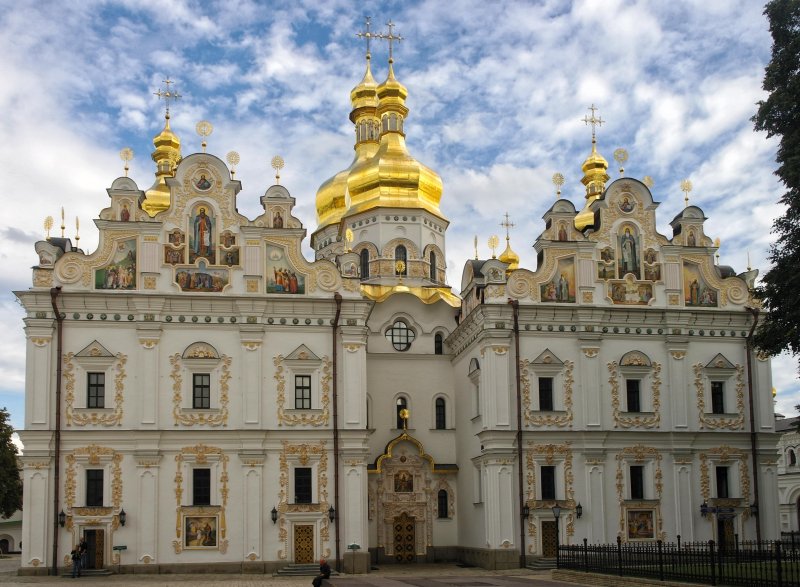 Dormition Cathedral is the main cathedral of the Lavra, which served as a tomb for Kyiv princes, the nobility, the Lithuanian and Russian gentry. Built in 1077 at the expense of Prince Sviatoslav Yaroslavovych, it became the first stone church at the monastery. Throughout history, it has repeatedly been destroyed. In 1729 it was rebuilt in the style of Ukrainian baroque, with its walls decorated with paintings of the masters of the Lavra Icon Painting School. The cathedral was decorated with a five-tier iconostasis. Its main shrine is the icon of the Assumption of the Blessed Virgin Mary. In 1941 it was blown up, and many unique valuables were exported to Germany. Only in 2000 the cathedral was restored. Today, the cathedral hosts solemn services.
Dormition Cathedral is the main cathedral of the Lavra, which served as a tomb for Kyiv princes, the nobility, the Lithuanian and Russian gentry. Built in 1077 at the expense of Prince Sviatoslav Yaroslavovych, it became the first stone church at the monastery. Throughout history, it has repeatedly been destroyed. In 1729 it was rebuilt in the style of Ukrainian baroque, with its walls decorated with paintings of the masters of the Lavra Icon Painting School. The cathedral was decorated with a five-tier iconostasis. Its main shrine is the icon of the Assumption of the Blessed Virgin Mary. In 1941 it was blown up, and many unique valuables were exported to Germany. Only in 2000 the cathedral was restored. Today, the cathedral hosts solemn services.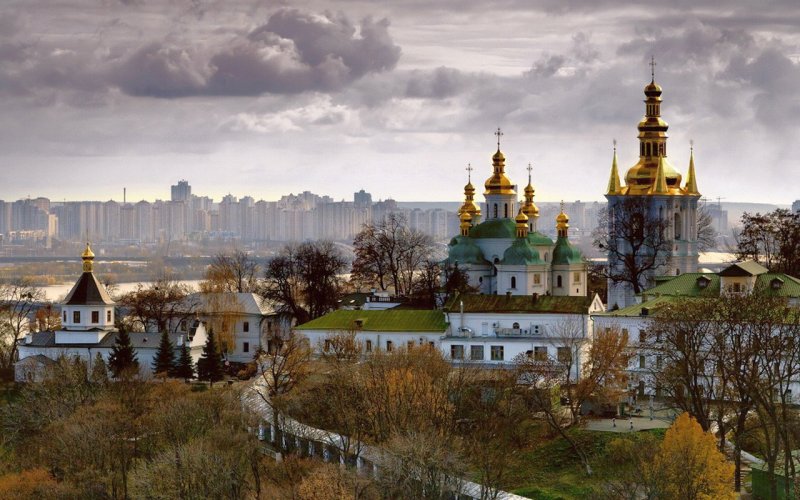 Far caves were founded in 1051 by monk Anthony (293 m). This date is considered to be the date of foundation of the Pechersky monastery. When the monastery began to expand, Anthony moved to another slope (current Near Caves). One of the founders of the monastery was Theodosius, buried in 1074 in the Far Caves, also called the Theodosius Caves. The oldest part is Variazhska cave. It is the one whereof appearance of the monastery is associated. In the Far Caves, there are three underground churches – the Annunciation of the Blessed Virgin, the Nativity of Christ and St. Theodosius, built next to his cell. In the XVII century, cathedrals were expanded to their current size. The Far Caves house the relics of saints. You can worship relics every day from 9:00 to 16:00.
Far caves were founded in 1051 by monk Anthony (293 m). This date is considered to be the date of foundation of the Pechersky monastery. When the monastery began to expand, Anthony moved to another slope (current Near Caves). One of the founders of the monastery was Theodosius, buried in 1074 in the Far Caves, also called the Theodosius Caves. The oldest part is Variazhska cave. It is the one whereof appearance of the monastery is associated. In the Far Caves, there are three underground churches – the Annunciation of the Blessed Virgin, the Nativity of Christ and St. Theodosius, built next to his cell. In the XVII century, cathedrals were expanded to their current size. The Far Caves house the relics of saints. You can worship relics every day from 9:00 to 16:00.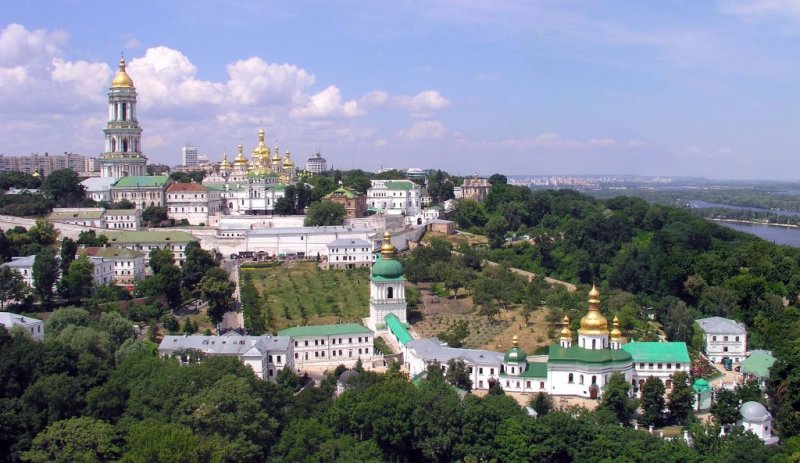 Near caves were founded in 1057 by monk Anthony. The length of the passages totals to 383 m. The depth is up to 15 m. The southeastern part has got three underground churches, with the oldest one being the Church of the Introduction of the Blessed Virgin. At the turn of the XVI-XVII centuries, the church of St. Anthony was erected in honor of the founder of the monastery. At the end of the XVII century, in one of the cells, the church of St. Barlaam was opened in memory of the first abbot Pechersky. Residential cells have been preserved in the underground churches. The Near Caves are open daily. Here you will see the relics of saints, in particular, those of the Monk Anthony, Nestor Chronicles, and the alleged remains of Ilya The Muromets.
Near caves were founded in 1057 by monk Anthony. The length of the passages totals to 383 m. The depth is up to 15 m. The southeastern part has got three underground churches, with the oldest one being the Church of the Introduction of the Blessed Virgin. At the turn of the XVI-XVII centuries, the church of St. Anthony was erected in honor of the founder of the monastery. At the end of the XVII century, in one of the cells, the church of St. Barlaam was opened in memory of the first abbot Pechersky. Residential cells have been preserved in the underground churches. The Near Caves are open daily. Here you will see the relics of saints, in particular, those of the Monk Anthony, Nestor Chronicles, and the alleged remains of Ilya The Muromets.